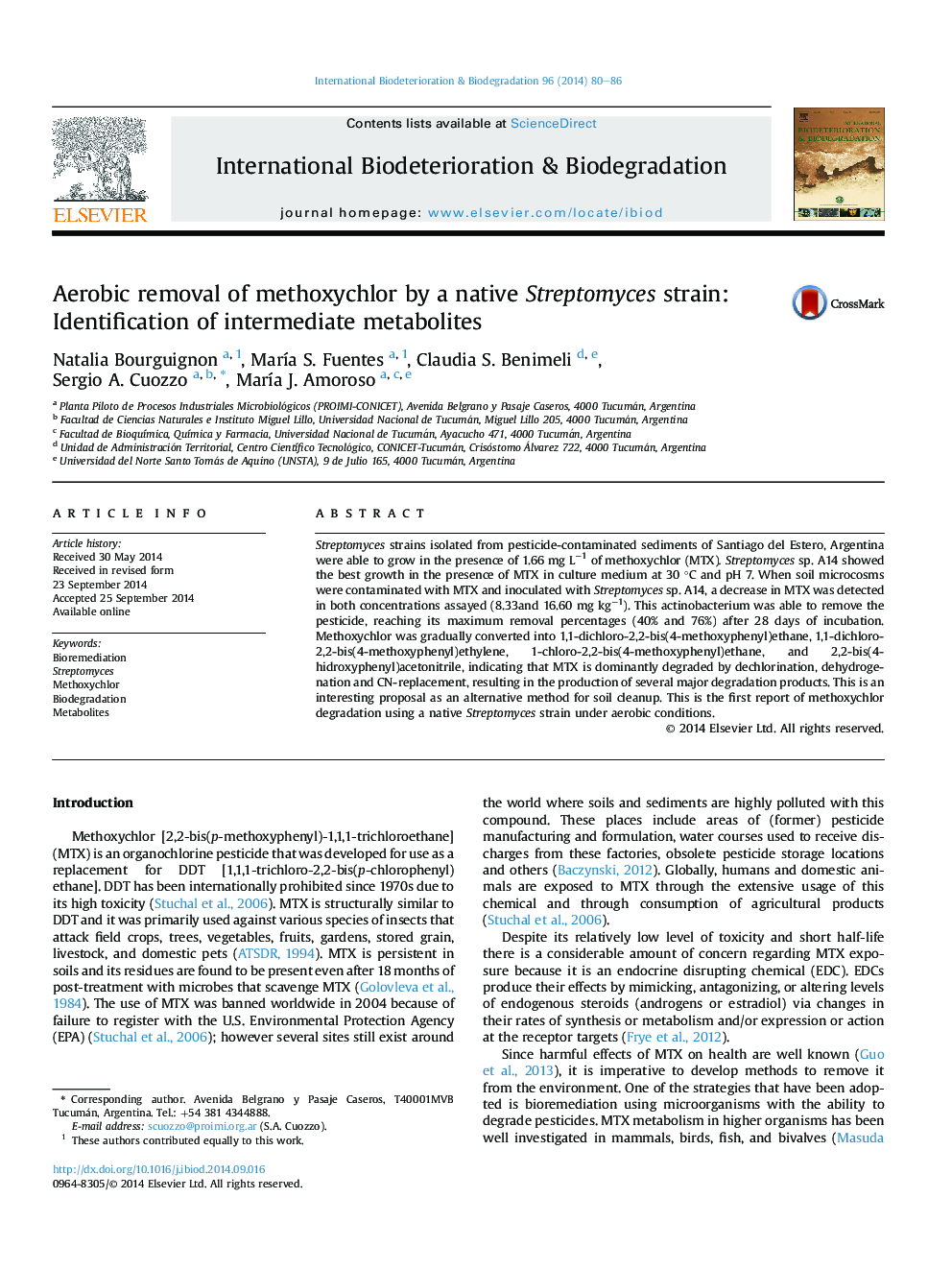| Article ID | Journal | Published Year | Pages | File Type |
|---|---|---|---|---|
| 6289225 | International Biodeterioration & Biodegradation | 2014 | 7 Pages |
Abstract
Streptomyces strains isolated from pesticide-contaminated sediments of Santiago del Estero, Argentina were able to grow in the presence of 1.66 mg Lâ1 of methoxychlor (MTX). Streptomyces sp. A14 showed the best growth in the presence of MTX in culture medium at 30 °C and pH 7. When soil microcosms were contaminated with MTX and inoculated with Streptomyces sp. A14, a decrease in MTX was detected in both concentrations assayed (8.33and 16.60 mg kgâ1). This actinobacterium was able to remove the pesticide, reaching its maximum removal percentages (40% and 76%) after 28 days of incubation. Methoxychlor was gradually converted into 1,1-dichloro-2,2-bis(4-methoxyphenyl)ethane, 1,1-dichloro-2,2-bis(4-methoxyphenyl)ethylene, 1-chloro-2,2-bis(4-methoxyphenyl)ethane, and 2,2-bis(4-hidroxyphenyl)acetonitrile, indicating that MTX is dominantly degraded by dechlorination, dehydrogenation and CN-replacement, resulting in the production of several major degradation products. This is an interesting proposal as an alternative method for soil cleanup. This is the first report of methoxychlor degradation using a native Streptomyces strain under aerobic conditions.
Related Topics
Life Sciences
Environmental Science
Environmental Science (General)
Authors
Natalia Bourguignon, MarÃa S. Fuentes, Claudia S. Benimeli, Sergio A. Cuozzo, MarÃa J. Amoroso,
